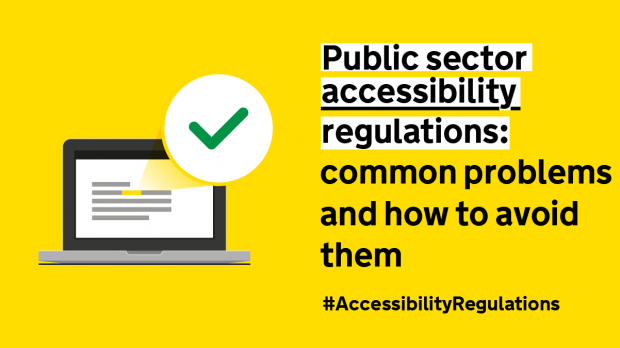
Public sector websites need to be accessible under UK law. That means websites should be perceivable, operable, understandable to all, and work with all technology someone might use to access the websites.
Teams responsible for sites across the public sector, including councils, central government departments, government agencies, colleges, universities and NHS organisations across the UK have been working hard to meet the accessibility regulations and make things better for users.
Common website accessibility issues
We wanted to share some of the common accessibility problems and share some beneficial approaches to help anyone working towards meeting the accessibility standards (WCAG 2.1 AA).
Overlays, popups and banners
It’s common practice to add new functionality to websites over time, such as cookie banners or coronavirus pop-ups. If you do this, you risk non-compliant features creeping back in to sites you’ve previously audited for accessibility, so remember to test any new functionality and make sure any issues are recorded and fixed.
Mobile use, reflow and zoom
Look out for older websites that were not built using current HTML and CSS, which means that they often do not adjust to the size of the screen correctly - this is known as reflow or responsive design. Parts of the webpage that either need to be scrolled horizontally to be reached, or cannot be read or accessed at all.
Zoom functionality is vital for many people who have visual impairments, and it’s one of the most used accessibility functions on mobile phones. Modern sites often move to a mobile view to allow this, but older sites do not respond well to zooming in. To solve this you should meet the WCAG standards about viewing content correctly and being able to access all functionality at 200% and 400% magnification (zoom).
Colour contrast and keyboard access
When some users are navigating your website, they need clear colour contrasts and the option of using the keyboard only. The latest version of WCAG increased the need for clear contrast between text, other elements on the webpage, and its background. In particular, when you use a keyboard to navigate a webpage, rather than a mouse, a focus indicator shows where you are on a webpage and what you can interact with. The focus indicator should have sufficient contrast from the background to make it easier to see.
Outsourced forms and services
Web teams aren't always in complete control of all pages and services on their websites. Parts of the site might have been outsourced to a supplier or use another company to provide functionality, such as forms, surveys and consultations. It’s vital these are fully accessible, and teams should think about accessible user journeys from start to finish.
PDFs
A lot of content online is published as PDFs rather than webpages. PDFs can be made more accessible but it normally requires more effort and training for all publishers on a website. Publishing as web pages will always be more accessible than uploading PDFs.
Building accessibility into your organisation
Organisations should think about embedding accessibility best practices into their processes, rather than running a one-off accessibility sprint. Training publishers to recognise basic accessibility issues, incorporating quick accessibility checks into their publishing processes, and technical teams automating accessibility testing into their deployment process can make a big difference.
It’s good to see more and more organisations in the public sector taking action to become more accessible online, but there is still more to do, especially for internal sites, systems and services.
There is one final deadline in the accessibility regulations, which is for mobile apps. Public sector organisations that have mobile apps need to make them accessible and publish accessibility statements by 23 June 2021. This means that accessibility audits need to be completed soon so that any issues found can be fixed.
Most organisations do not have an app development team in-house, so if you develop and publish apps, you will need to work with your app developer to make sure they are fully accessible.
You can visit our accessibility campaign for more information as well as guidance on making your website or app accessible.
We are doing research with public sector organisations to help improve our accessibility guidance. We're inviting people who work in the public sector to join our user research panel. If you would like to help, please answer some questions about the accessibility regulations.


1 comment
Comment by Manuel Cheta, WAS posted on
Hopefully UK regulations will start applying to private websites as well. We should rephrase accessibility to "institutionalised empathy" :d